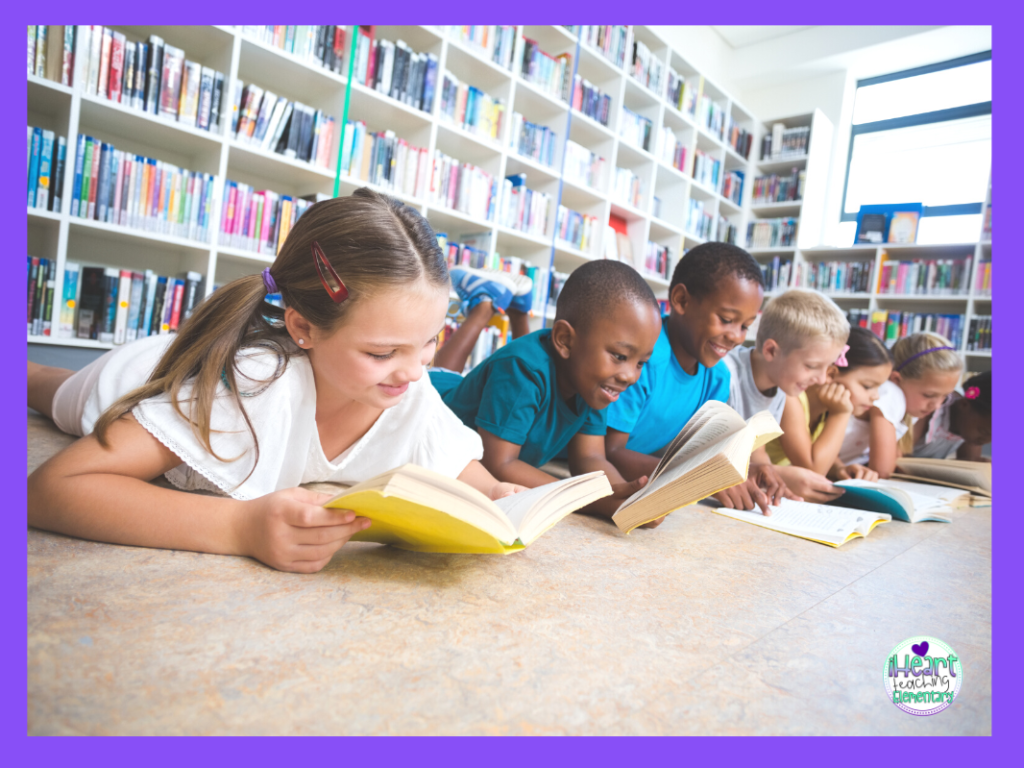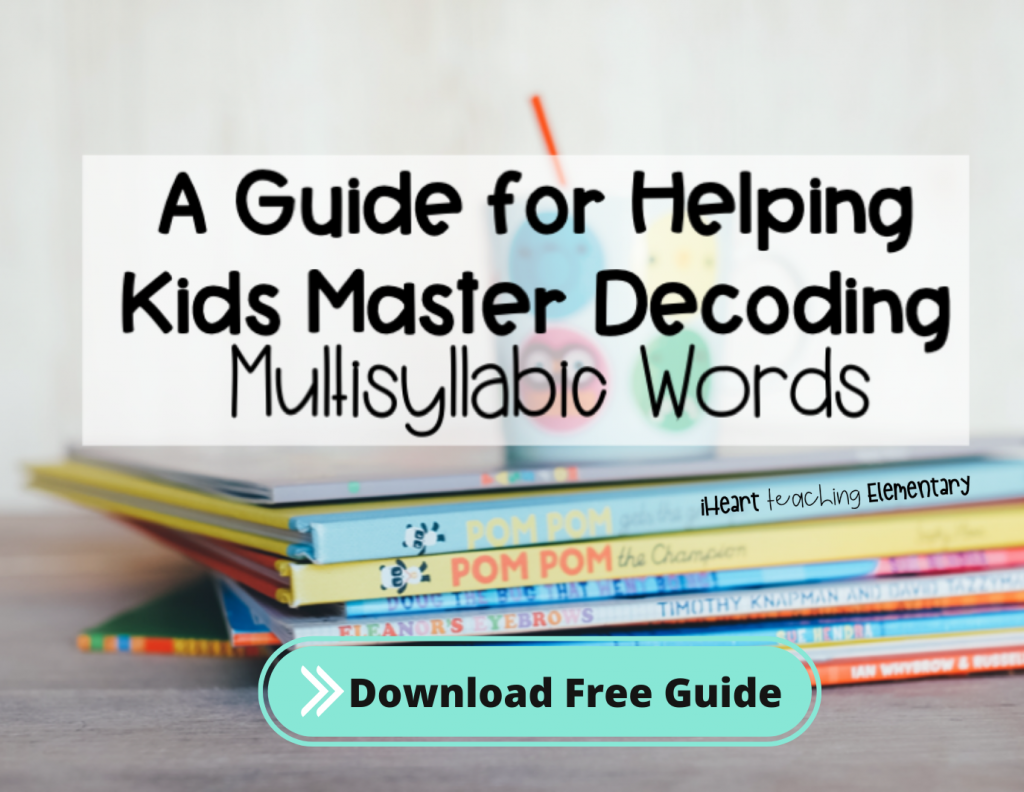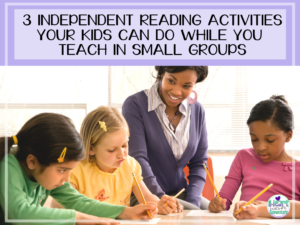Let’s talk about starting the school year by teaching multisyllabic words in the upper grades. When I say upper grades, I’m including third grade, because sometimes it’s that weird year where it’s not primary, but it’s also not usually considered upper elementary like fourth and fifth.
Multisyllabic words help improve reading skills and vocabulary. When kids learn more complex words early on, they’re able to develop a better understanding of what they’re reading.
One of the most important things that you could do at the beginning of the year is to start off by teaching multisyllabic words. Why? Because multisyllabic words are essential for kids to be able to read more complex texts.
And when they enter third, fourth, and fifth grade, they’re reading those more complicated texts or longer passages.
Kids need to be able to know not only how to decode those multisyllabic words but understand what they mean. When kids get into the upper grades, they’re expected to read to learn so they’re reading a lot more social studies and science content.
In those grades, there’s more of a reading comprehension focus. And when kids are reading these complex texts, these texts that have a lot of difficult words, and they’re unable to figure out an unknown word, they lose the meaning, so their comprehension struggles.

That’s why I start the year with little mini lessons showing the kids how to break apart multisyllabic words.
I start off by going over the eight main syllables. I also teach the schwa because it is an important part of syllable teaching, in my opinion. There are so many words that have the schwa. And kids need to be able to recognize it in order to be able to read syllables correctly.
So what I do is I teach each of the main syllables one syllable a day, for eight days, I’ll use either a poster or maybe sometimes I’ll create a chart with the kids. And I like to give them some type of bookmark or a sheet of paper that they can reference. So when they go into their independent reading, they can use it to find those syllables in their own books.
Something that makes it easier to teach the syllables and how to find them in multisyllabic words is to have a list ready to go that has words that fit under each of the eight most common syllables.
I like to pick one or two words from the list for whichever syllable I’m focusing on for the day. And I teach them a strategy called spot and dot. spot and dot is a way to break up a word into syllables, and then put it all together to be able to read the word.
I have a free resource that teaches the strategy that you can download here.
After the mini-lesson, I like to have the kids go into their own independent reading books and look for words with the syllables that we talked about. They have a bookmark, or they have a sheet of paper with different types of syllables to help them as they’re doing their independent reading.
They either mark it with a sticky note where they find the word or even just write it down on a piece of paper.
We do this routine for the eight days that it takes to go over each of the syllables. And then once we’re done with that, review and I’ll pick two or three words a day.
For the first and second quarter of third grade, we do a little five-minute lesson, reviewing how to break apart a multisyllabic word and put it all back together. At the beginning of the year, your lessons might be longer because the kids are still learning the routines and procedures of your class.
But eventually, they’re only going to need about five minutes a day. You can even do word of the day. And if you don’t have time to do it with the whole class, you could also do this with just a small group of kids.
It can be a warm-up to your small group. Or maybe it’s something that you do right before dismissal.

Something I need to mention that’s important is that you need to not only show them the strategy of breaking apart a multisyllabic word but also show them how to apply it to their independent reading.
I model this for the kids. I show them how I come up to a word that I may not know as I read and I write it down on a sticky note.
I show them how I break apart the word, and then how I put that word back into the text to see if it makes sense. Because that’s the goal. For kids to be able to read multisyllabic words during their independent reading.
Whether it’s in a book or in a test passage, you’ll have to model and reinforce how to stop at unknown words and break them apart. This will happen more than once a year because kids will sometimes just not stop at any of the unknown words.
They keep reading and then their comprehension will break down. So I like to reinforce this multiple times throughout the year.




